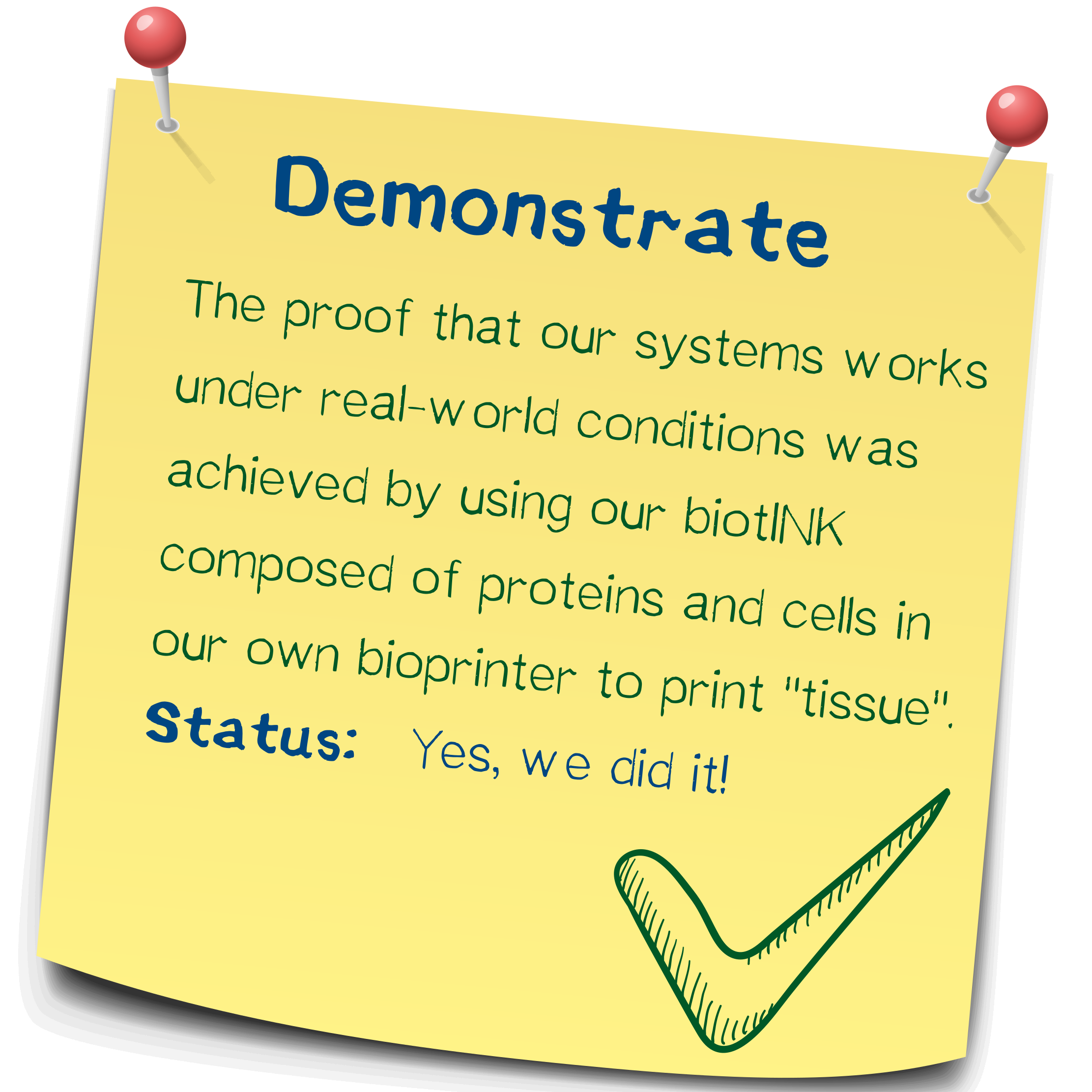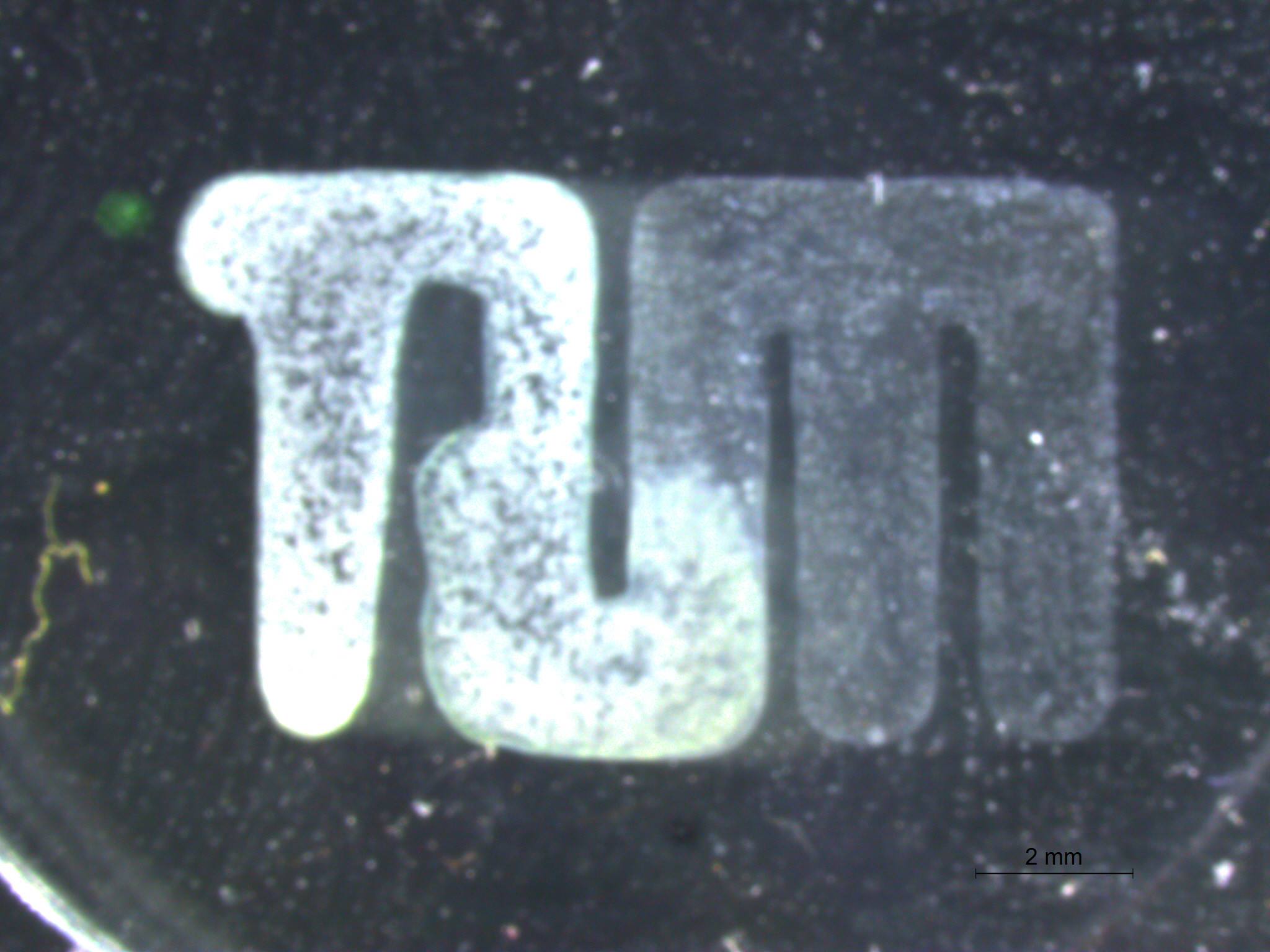Bioprinting
An emerging path that could revolutionize science
3D bioprinting comes up with some challenges that are not being addressed in non-tissue printing: choice of cell types, assembly method, growth, differentiation and vascularization factors as well as technical difficulties concerning the sensitivity of the biological material. Bioprinting is, therefore, a melting pot of natural sciences and thus a highly interdisciplinary field. Due to its high complexity and tremendous relevance for synthetic biology, we even recommend and advocate a future iGEM-track only for bioprinting; the imagination of new possibilities offered by overall functional and fully controllable bioprinting is sheer endless. Our self-assembled bioprinter makes further improvements by future iGEM-teams possible. Following short description should reveal an idea about the variety of 3D-bioprinters:
In general, there are three types of bioprinters: inkjet, microextrusion, and laser-assisted printers. Inkjet bioprinters are working either on a thermal basis using electricity to heat the printhead that leads to air pressure pulses[1]. The created force lets droplets flow out of the nozzle in a controlled manner. Or inkjet bioprinters are based on acoustic waves produced by piezoelectric or ultrasound pressure. In contrast to gradually working inkjet printers, microextrusion bioprinters have pneumatic or mechanical (like ours) dispensing systems that are capable of continuously extruding biomaterials. Laser-based bioprinters are also delivering cells only gradually by focusing pressure on cell-containing slides leading to their drop-off on a collector substrate[2].[3]
These techniques differ mainly in three factors: surface resolution, cell viability, and used biomaterials. In our case, the latter part is redundant, since we print directly cells without a certain scaffold[4].
| Inkjet | Microextrusion | Our bioprinter | |
| Cell viability | >85% | 40-80% | According to our calculations near 100% |
| Material viscosities | 3.5-12 mPa/s | 30 mPa/s to >6 x 107 mPa/s | 1.5*10-3 |
| Gelation methods | Chemical, photo-crosslinking | Chemical, photo-crosslinking | not needed |
| Print speed | Fast (1-10000 droplets/s) | Slow (10-20 µm/s) | Slow |
| Resolution or droplet size | <1 pl to >300 pl droplets, 50 µm wide | 5 µm to millimeters wide | 20 µm (depends on nozzle size) |
| Cell densities | Low, <106 cells/ml | High, cell spheroids | <108 |
| Printer cost | Low | Medium | Very low (<2000€) |
References
- ↑ Cui, X., Boland, T., D D'Lima, D., & K Lotz, M. (2012). Thermal inkjet printing in tissue engineering and regenerative medicine. Recent patents on drug delivery & formulation, 6(2), 149-155.
- ↑ Barron, J. A., Wu, P., Ladouceur, H. D., & Ringeisen, B. R. (2004). Biological laser printing: a novel technique for creating heterogeneous 3-dimensional cell patterns. Biomedical microdevices, 6(2), 139-147.
- ↑ Murphy, S. V., & Atala, A. (2014). 3D bioprinting of tissues and organs. Nature biotechnology, 32(8), 773-785.
- ↑ Xu, T., Zhao, W., Zhu, J. M., Albanna, M. Z., Yoo, J. J., & Atala, A. (2013). Complex heterogeneous tissue constructs containing multiple cell types prepared by inkjet printing technology. Biomaterials, 34(1), 130-139.
- ↑ Murphy, S. V., & Atala, A. (2014). 3D bioprinting of tissues and organs. Nature biotechnology, 32(8), 773-785.
- ↑ Murphy, S. V., & Atala, A. (2014). 3D bioprinting of tissues and organs. Nature biotechnology, 32(8), 773-785.




